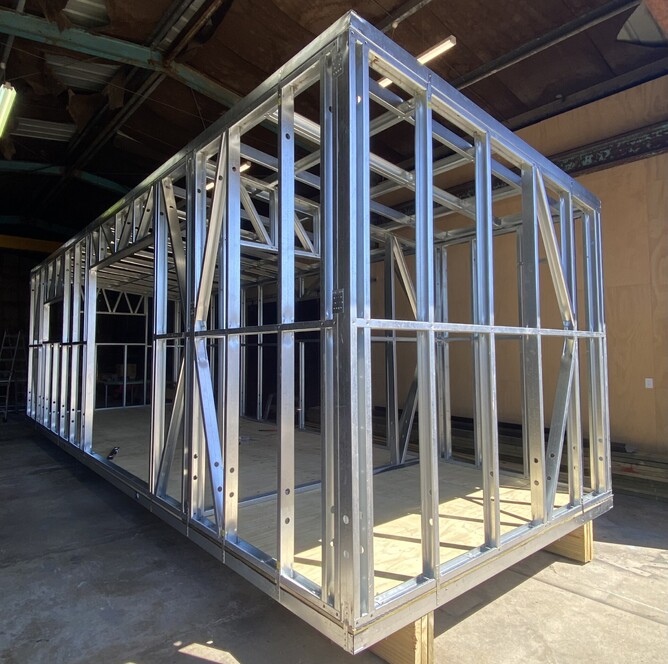Steel Framing vs. Timber Framing:
When it comes to building a tiny home or cabin, one of the most important decisions is choosing the right framing material. While timber framing has long been the traditional choice, steel framing is quickly gaining popularity - especially in the realm of smart housing solutions. Here's why steel framing might be the superior option for your next tiny home or cabin.
1. Durability and Strength Steel frames are incredibly strong and resistant to wear and tear. Unlike timber, which can warp, crack, or rot over time, steel maintains its structural integrity, even in extreme weather conditions. For tiny homes or cabins exposed to harsh elements, steel offers long-lasting protection. It’s also resistant to termites and other pests, making it a more reliable option for ensuring the longevity of your home.
2. Fire Resistance Steel framing is non-combustible, providing a significant safety advantage over timber framing. Steel doesn’t burn, so it helps protect your home from fire damage, offering peace of mind for you and your family.
3. Sustainability Steel is a highly sustainable material because it’s 100% recyclable. Unlike timber, which comes from trees, steel doesn’t contribute to deforestation. As Smart Housing Solutions continues to focus on environmental impact, using steel framing aligns with the growing demand for eco-friendly construction materials.
4. Precision and Efficiency Steel frames are pre-engineered and manufactured with precision, making them quicker to assemble than traditional timber frames. This means fewer errors during construction, a faster build time, and reduced labor costs. For tiny homes, where space is already limited, the precision of steel framing ensures maximum efficiency in design and construction.
Overall, Smart Housing Solutions favours steel over timber framing for tiny homes and cabins because it offers superior durability, fire resistance, sustainability, and efficiency - key factors for building homes that last.
